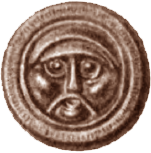For those without much background in early history, oral tradition is the technique of passing down stories from generation to generation by word of mouth. The ancient Greeks and Romans are famous for using this style of storytelling before writing became widespread. After the advent of writing the mysterious poet, Homer is accredited for having allegedly authored famous epics such as the Iliad and the Odyssey. However, there is much debate about whether Homer was an individual or merely a catchall for the poets who spoke the tales for centuries before writing became popular. Similar issues arise when looking at Norse and Icelandic oral tradition as well.

Here scholars are divided between two main parties, the traditionalists and the inventionalists. The traditionalists are also known as free-prose theory supporters and the inventionalists are also known as book-prose theory supporters. Free-prose supporters argue that early Icelandic literature arose from a strong oral tradition and was further set in motion by early Christian influence. Book-prose supporters believe early Icelandic literature was influenced more heavily by the storytelling traditions or nearby regions.

Three main types of early Icelandic or Old Norse literature include Eddic poetry, Skaldic poetry, and Icelandic/Norse sagas. Eddic poetry comes from the Poetic Edda, an ancient collection of heroic and mythical poems. This type of poetry is described as dialogue-centered and a predecessor to early drama. Skaldic poetry is said to be more focused on reality than Eddic poetry and thought to be lavish with its use of metaphors and syntax. There are several types of Norse and Icelandic sagas, with family sagas being one of the most well-known varieties. These family sagas are based on historical events and tend to follow the events of a particular family or lineage.

As quoted in Carol J. Clover’s Icelandic Family Sagas, modern scholar Theodore M. Andersson positioned himself as a supporter of the free-prose theory. In Clover’s article, Andersson argues that family sagas are too complex and lavish to have been made out of nothing. According to Andersson, family sagas and other early written works must have drawn on styles and practices established within oral tradition’s long history. Other supporters of the traditionalist theory draw on the analysis of syntax and diction from these early writings. It has been argued that mismatching verb tenses and awkward phrasing in early texts could be traced back to the oral tradition in which bards would be recreating stories on the spot and make grammatical mistakes when getting caught up in the story or stopping to take a breath (Hallberg). Book-prose theorists argue that differences in written details which some might credit to oral tradition might actually come from writers scribing stories from memory, perhaps from hearing them long ago (Hallberg). Others of this side also claim, contrary to Andersson, that the complexity of written stories comes from looking at and revising previous written versions, much like how different versions of modern texts exist today, think perhaps of Mary Shelley’s Frankenstein and its different versions.

Unfortunately, the degree to which oral tradition influenced early Icelandic and Old Norse literature will likely remain a topic of debate. Thus, far there is no concrete way of knowing what exactly existed within oral tradition due to its very nature. The closest we can get is from looking at early texts and making informed assumptions about what comes from oral tradition and what comes from written tradition. Nevertheless, it is clear these early forms of literature have some influence from oral tradition.

[J. S.]